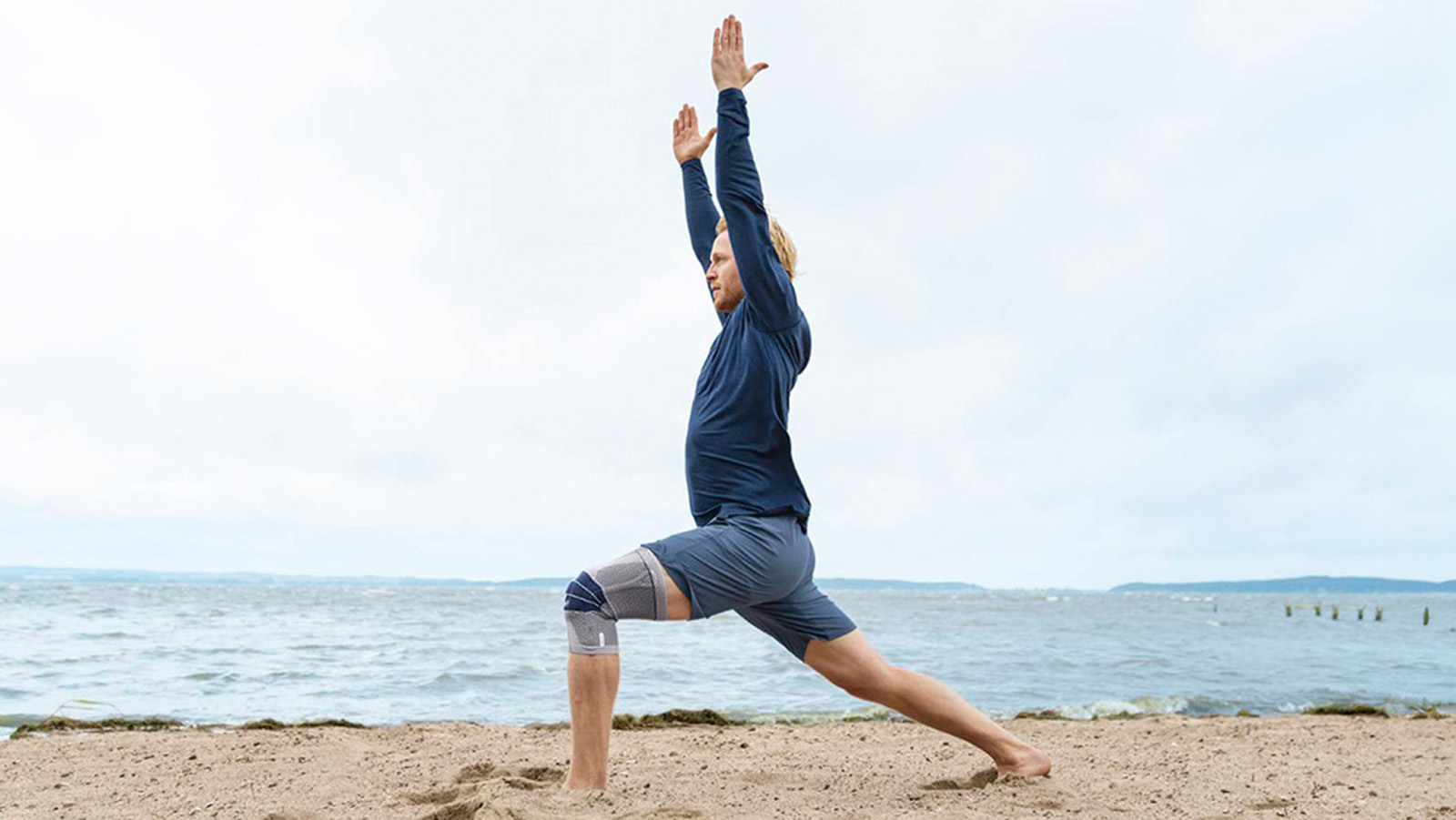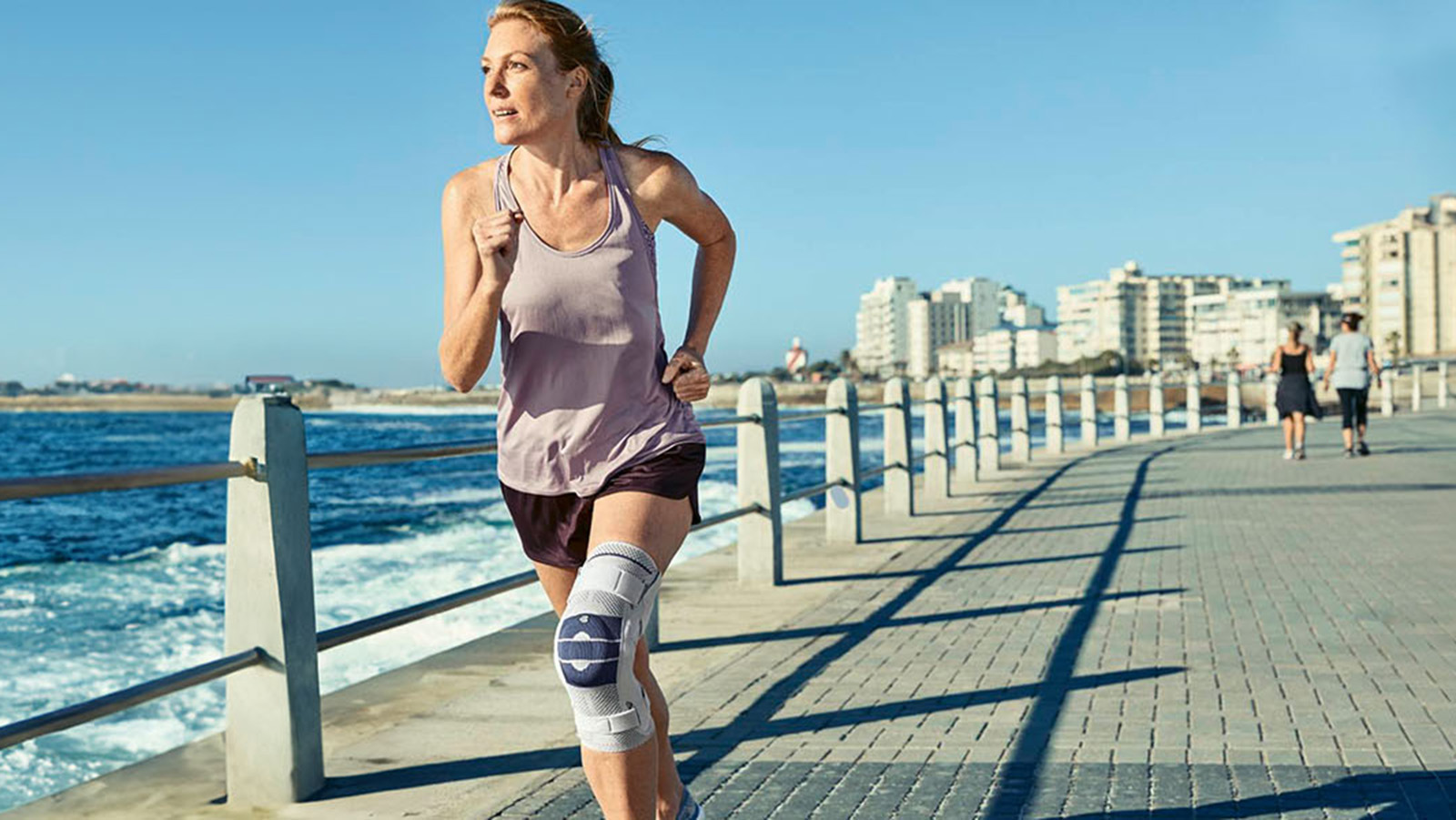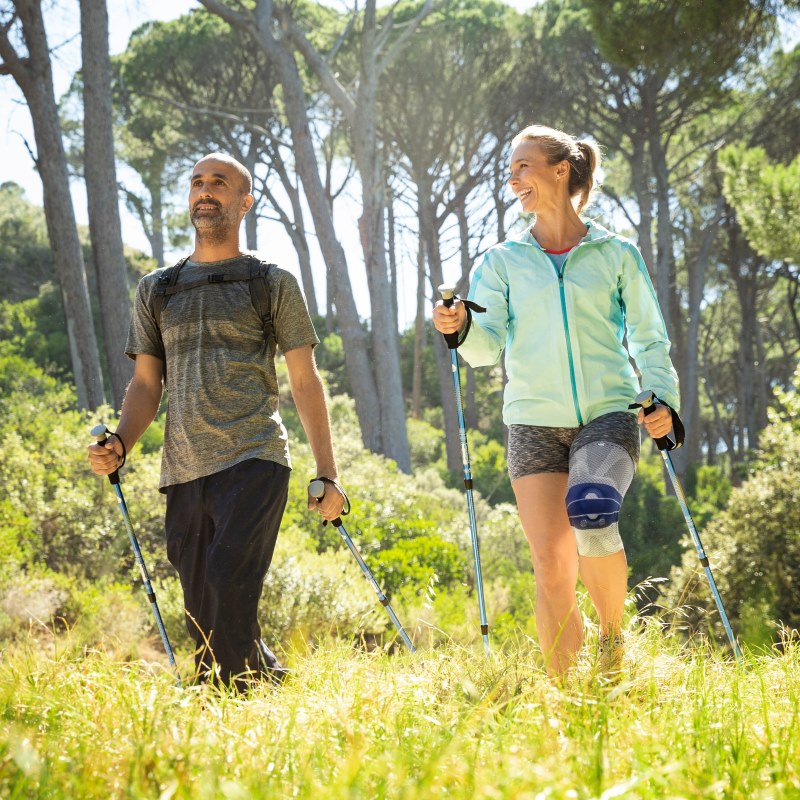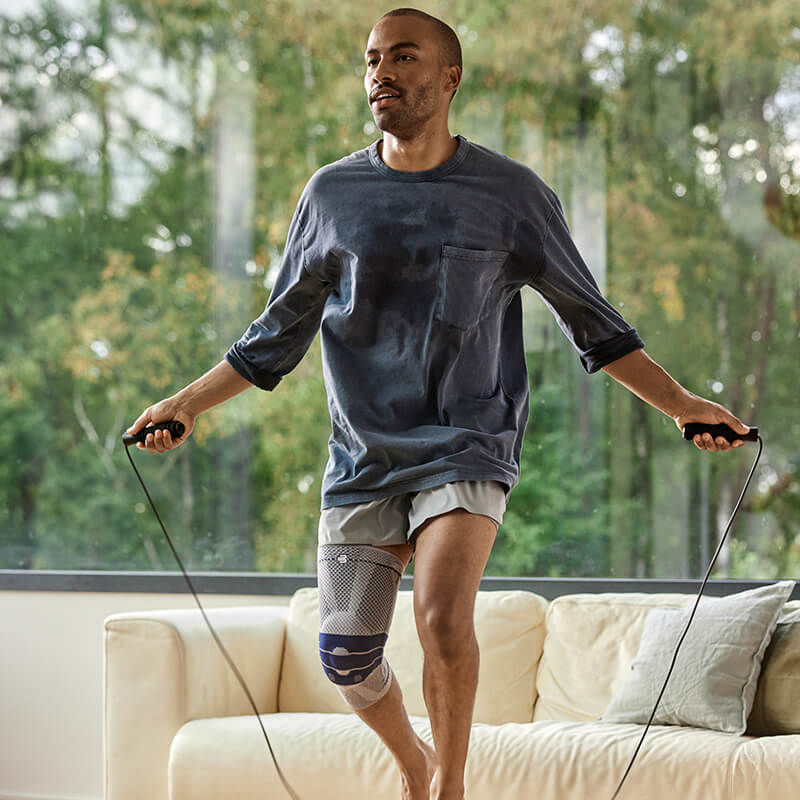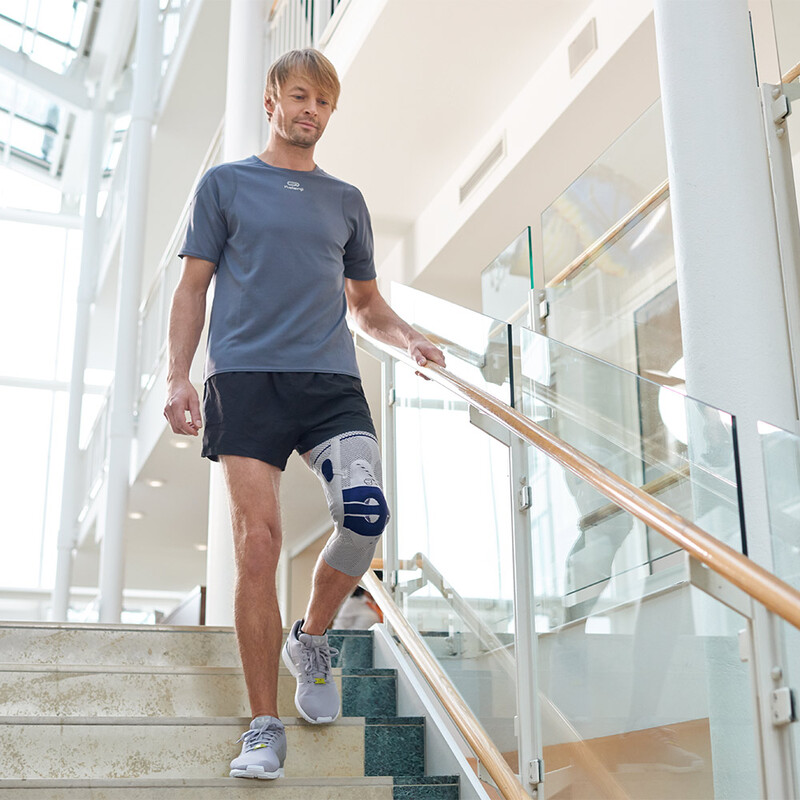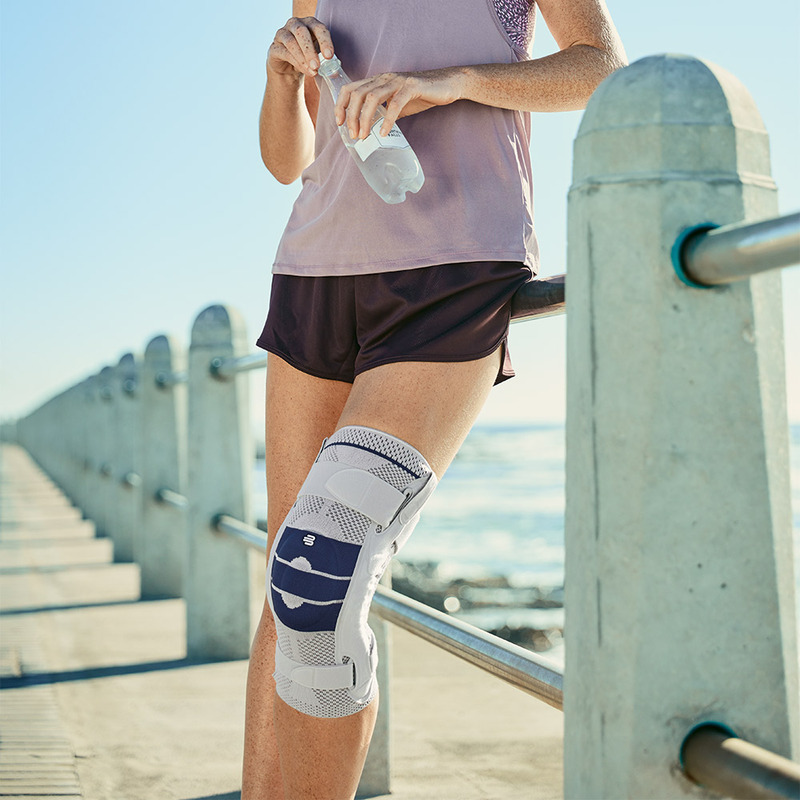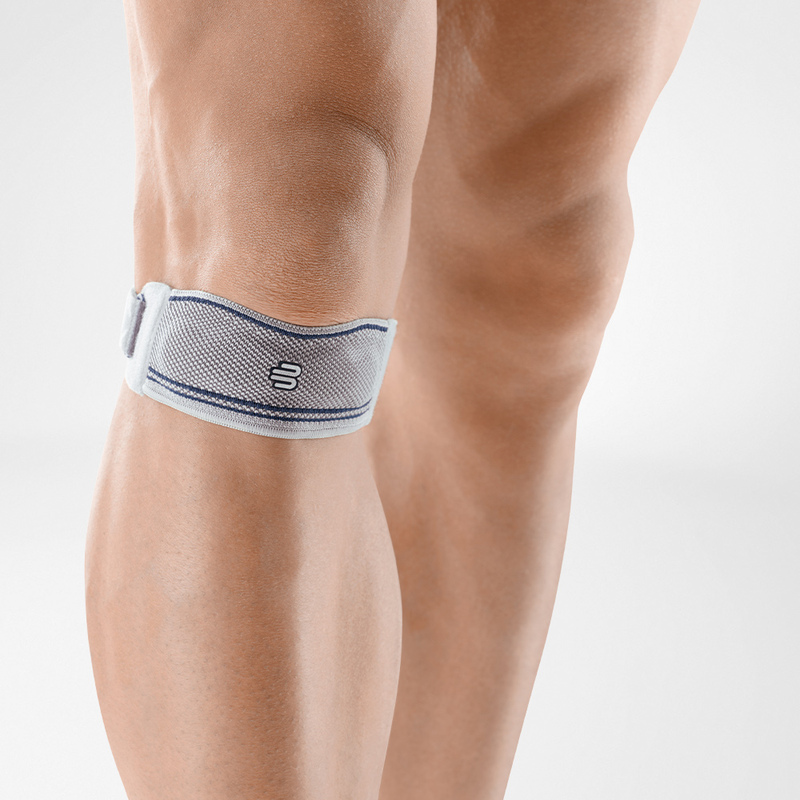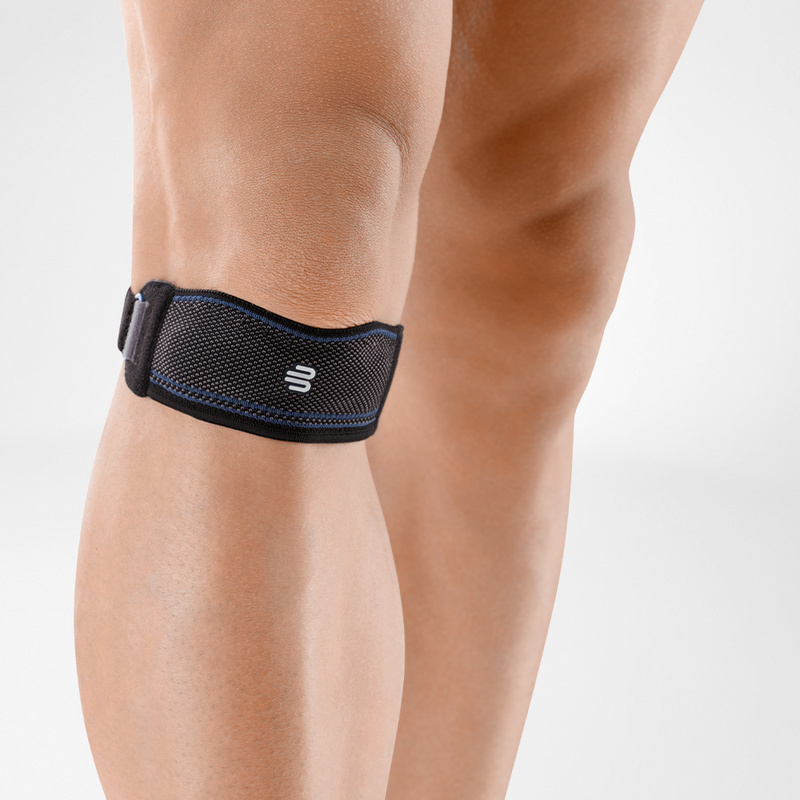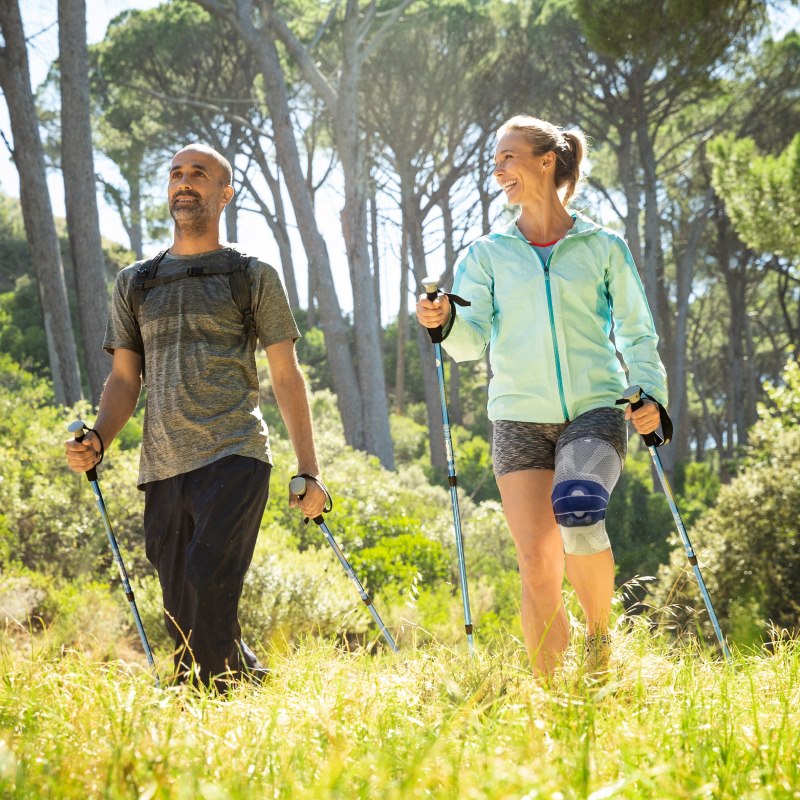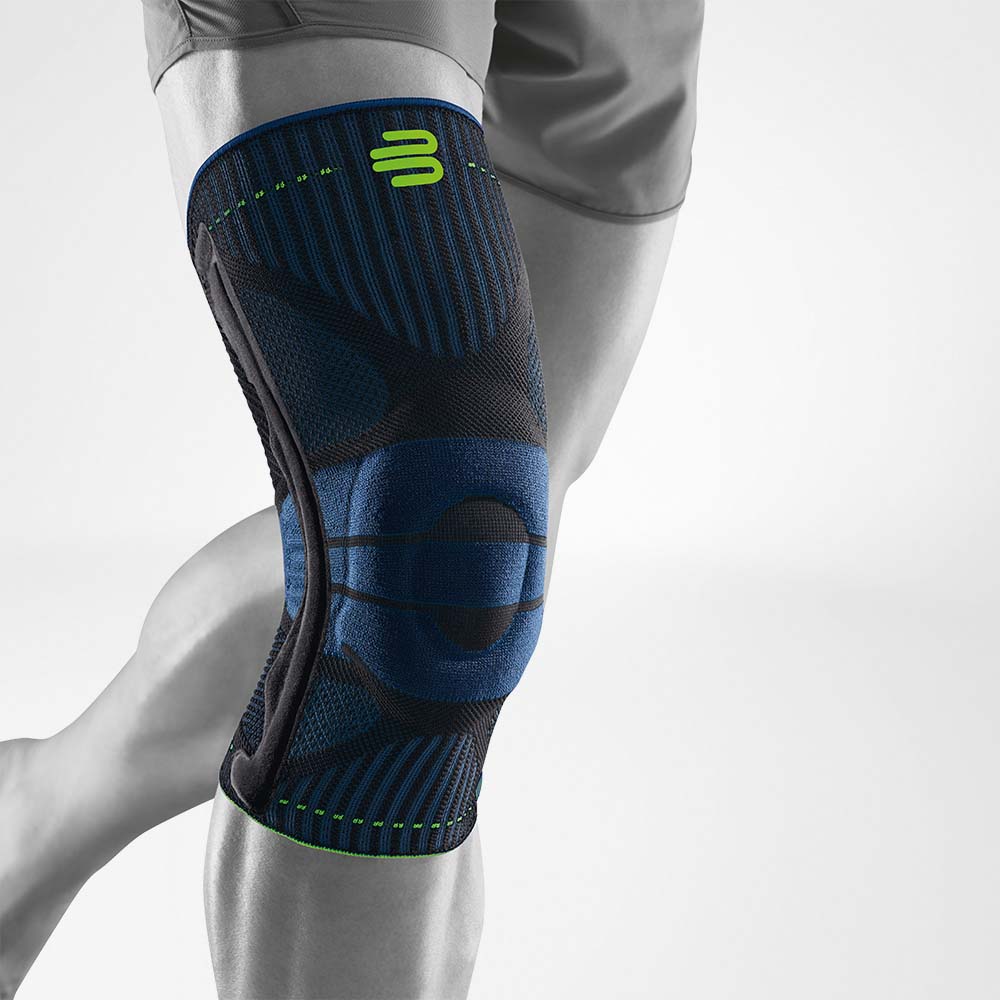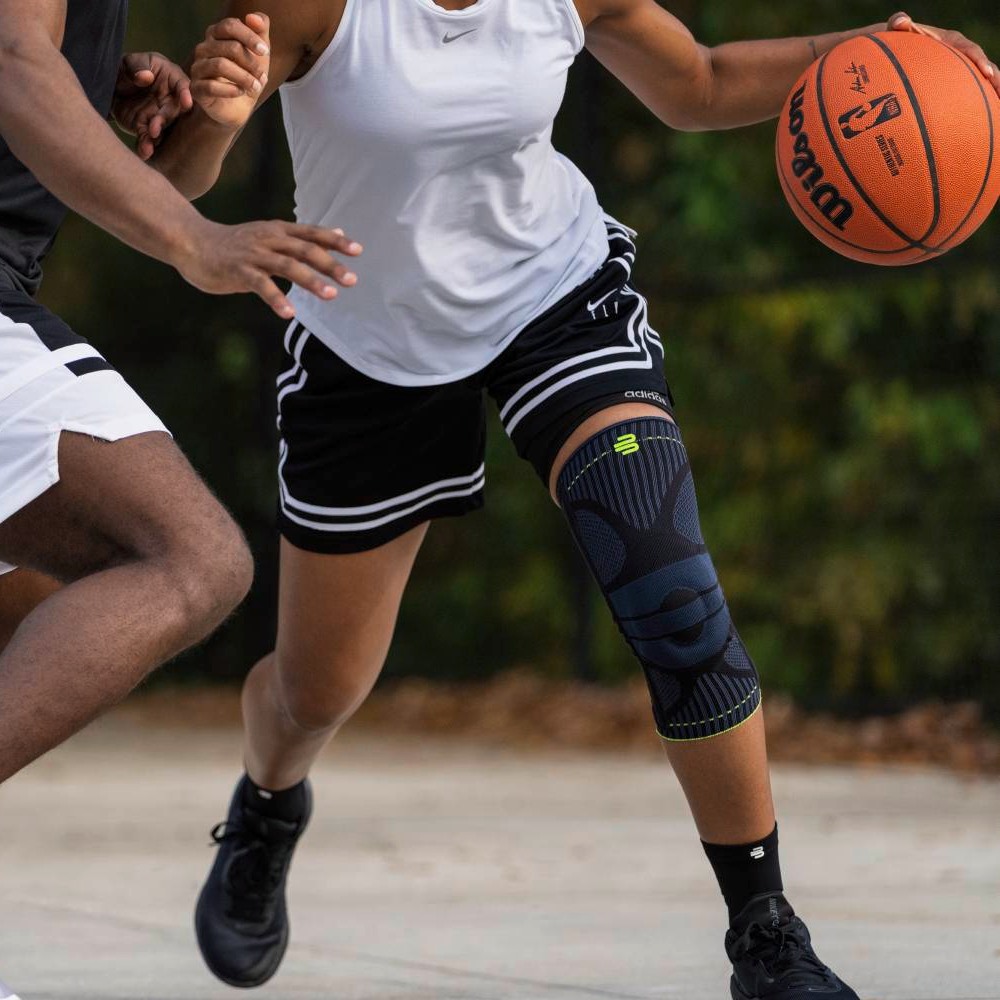Sprained Knee
Pain in the Knee after Ligament Injury
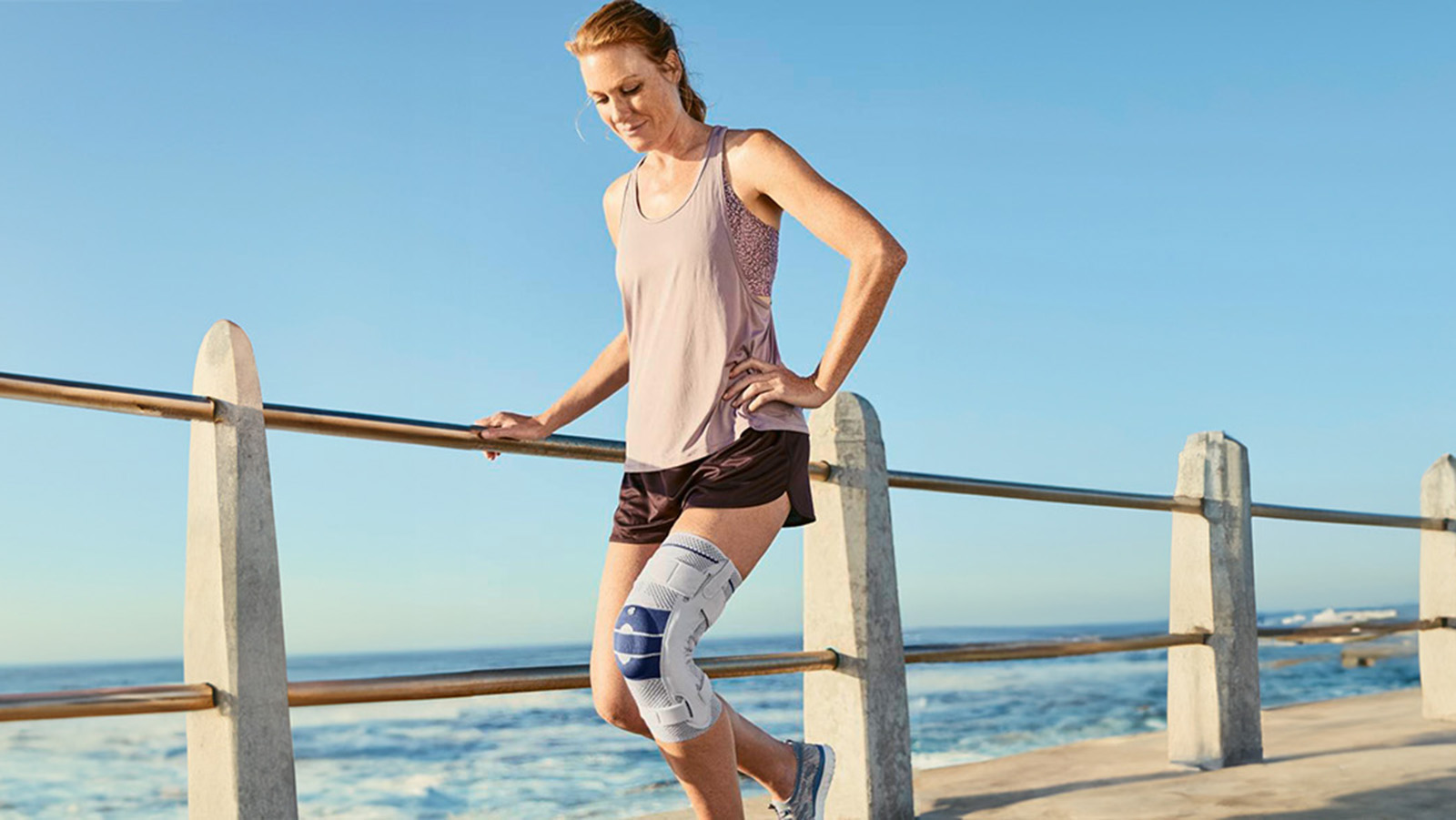
A knee sprain is a common injury that refers to a stretched or torn ligament on the knee joint. This can happen during sports, after falls, trauma or during a car accident. The knee has four ligaments, and according to the CDC the anterior cruciate ligament (ACL) is injured most often, with 250,000 cases per year in the U.S. Read in this article about symptoms, causes and treatment options of knee ligament injuries.
Symptoms of a Sprained Knee
The knee joint connects the thigh and calf with a system of muscles, tendons and ligaments. The four ligaments in the knee stabilize the joint with two ligaments on each side of the knee, and two x-shaped ligaments in the center and back of the knee.
- Anterior cruciate ligament (ACL) X-shaped ligament located inside the center of the knee
- Posterior cruciate ligament (PCL) X-shaped ligament located inside the back of the knee
- Medial collateral ligament (MCL) Ligament on the inner (medial) side of the knee
- Lateral collateral ligament (LCL) Ligament on the outer (lateral) side of the knee
Depending on which ligament you've injured, you will probably feel pain in different areas of the knee. After a Lateral Collateral Ligament (LCL) sprain, you might feel pain on the outside of the knee. By contrast, you would feel pain on the inner side after injuring the MCL. And while injuring one of the X-shaped ligaments of the knee, you might hear a popping sound. An ACL injury is the most common ligament injury and can also involve more than one ligament – this condition is commonly called “Unhappy Triad”.
Symptoms:
- Popping sound at the time of the injury
- Mild to severe pain
- Swollen or bruised knee
- Joint instability
- Stiffness, you can’t bend or completely straighten your knee
- Feeling that your knee can’t support your weight or is giving way
When to see a doctor
Consult a doctor if your knee looks deformed, you can’t completely bend and straighten it, your pain does not subside within a few days or you develop a fever.
Sprained knee causes
Injuries to the knee ligaments are usually caused by sudden changes in direction, twisting or direct force. The cruciate (x-shaped) ligaments control the back and forward motion of the knee, while the collateral (inside and outside) ligaments control the sideways motion.
Anterior/Posterior Cruciate Ligament Injuries
Occur mostly during sports e.g. soccer, basketball, skiing, wrestling, football with rapid change in direction, twisting or direct impact. Most PCL injuries happen during car crashes when the knee hits the dashboard.
Medial/Lateral Collateral Ligament Injuries
These ligaments can be torn through a direct sideways blow or fall. LCL injuries are the rarest, as most of them happen with a blow to the inside of the leg and the other leg usually shields it. After examining your knee closely, your doctor might use diagnostic imaging like X-ray, computed tomography (CT), or magnetic resonance imaging (MRI) to determine the exact cause of your knee sprain.
Treating a Sprained Knee
There are several treatment options for a sprained knee. Depending on the severity, some may be treated at home. The most important component of treatment is to alleviate pain immediately. If your knee pain does not get better within a few days, please see your doctor.
Grade 1: Mild sprains with stretched ligament (no tear)
Grade 2: Moderate sprains with partially torn ligament
Grade 3: Severe sprains with completely torn ligament
Home Remedies
- Rest to avoid excessive strain, as part of RICE Therapy (Rest, Ice, Compression, Elevation)
- Stabilize the joint and reduce pain with the Bauerfeind GenuTrain S knee support
- Take over the counter anti-inflammatory medication (NSAIDs) such as Ibuprofen to reduce pain and inflammation
- Use crutches to take the weight of the knee
Advanced Therapy
- Physical therapy exercises to strengthen the muscles around the knee
- Surgery may be necessary after a grade 3 ligament tear
GenuTrain S Knee Brace
With side bars and adjustable strap system for superior stability. The GenuTrain S knee brace is a comfortable, knitted support with medical-grade compression and viscoelastic massage pad providing relief from pain and swelling with every step.
Recovery Time
Typically mild to moderate ligament injuries heal with conservative therapy within a few weeks. However, more severe cases (grade 3) might require surgery and months to heal. The Bauerfeind GenuTrain S knee brace can help you get back to normal - stabilizing and reliving your knee pain until you recover to full strength and mobility.
You might also be interested in:
Best Brace for a Swollen Knee
GenuTrain Knee Brace proven to relieve pain and swelling.
Best Knee Brace for Ligament Injuries
Secure and stabilize your knee with GenuTrain S
Best Knee Brace for Patella Tracking
GenuTrain P3 centers and secures the knee cap
Knee Osteoarthritis
Read about symptoms, causes and home remedies of chronic knee pain
This information is provided for general information purposes and should not be relied on as a substitute for medical advice, evaluation or care from a qualified and licensed health care provider. The information contained here is not to be considered a plan of care of physical therapy.




